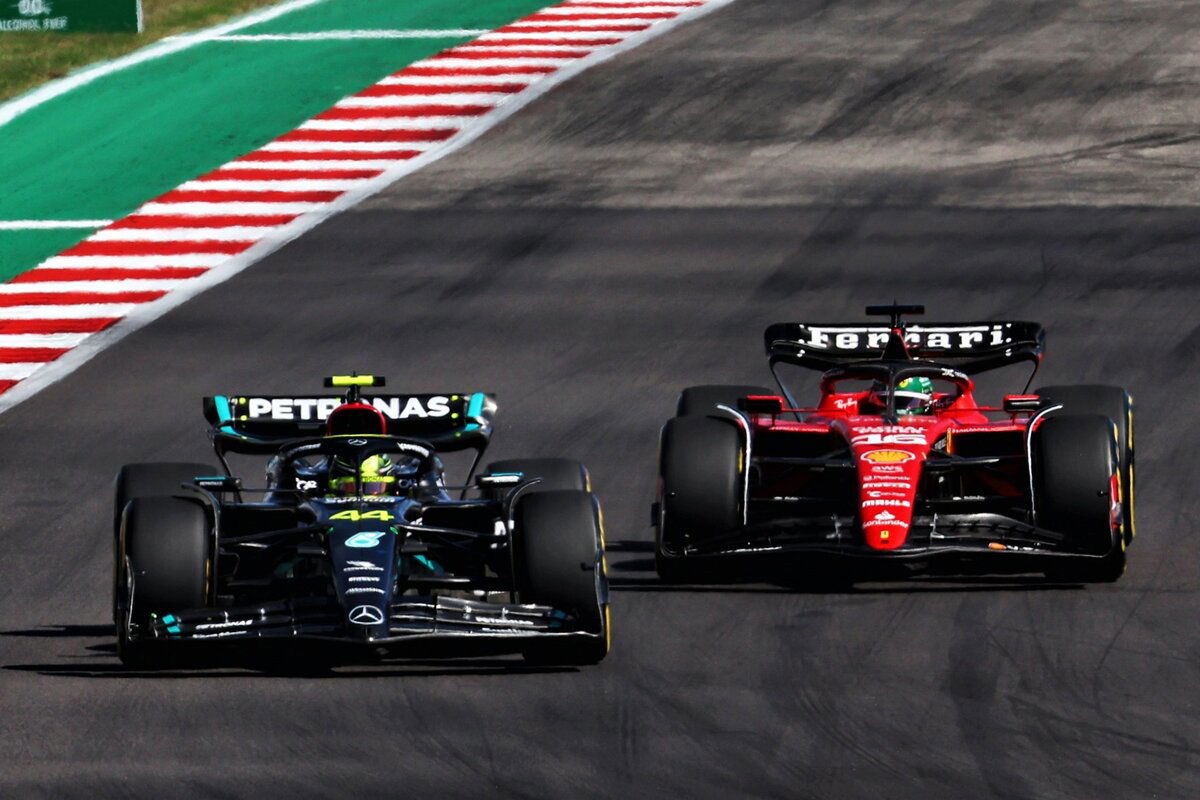

Lewis Hamilton and Charles Leclerc were disqualified from the United States Grand Prix after their cars were found in breach of a comparatively obscure technical rule.
Specifically, the pair were excluded for excessive plank wear following Sunday’s 56-lap race around an excessively bumpy Circuit of The Americas.
Hamilton had finished second and Leclerc sixth, meaning their punishment had a significant impact on the final results.
Officially, Max Verstappen won the race from Lando Norris and Carlos Sainz.
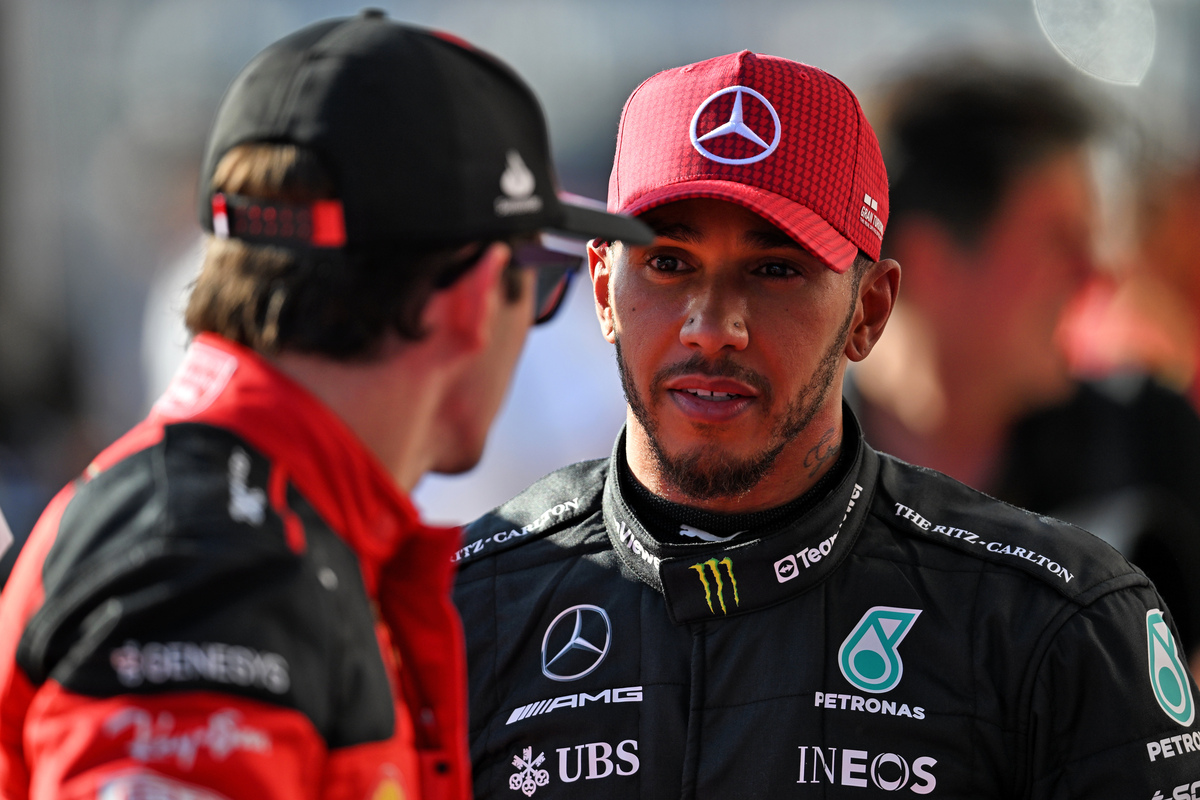
Why were Hamilton and Leclerc disqualified?
Hamilton and Leclerc were disqualified from the United States Grand Prix because their cars were found in breach of the technical regulations.
Though there were potentially mitigating factors, and the FIA stewards acknowledged as much in their decision, the simple fact of the matter was that Mercedes and Ferrari were outside of the regulations.
There is a chance others were too, however, penalties can only be handed out for proven breaches, not suspected infringements.
Technical breaches are typically binary and if outside of the regulations the car is illegal. Exclusion is an industry-standard in such instances.
Indeed, precedents pertaining specifically to the plank go all the way back to the 1994 Belgian Grand Prix.
There, Michael Schumacher spun at Fagnes, bouncing over the kerbs before going on to take the chequered flag first.
He was subsequently disqualified when it was found his plank and worn more than the allowed 1mm, a point his Benetton team argued was a result of his mid-race excursion.
The FIA didn’t accept that and disqualified the German from the race.
On the flipside was Jarno Trulli, who was reinstated into the 2001 United States Grand Prix results after being excluded for excessive plank wear.
There, a steward was not present when the measurement was taken post-race, a point the Jordan team successfully argued resulting in Trulli keeping fourth place.
Last weekend, there were no such faux pas, and both Mercedes and Ferrari accepted their fates.
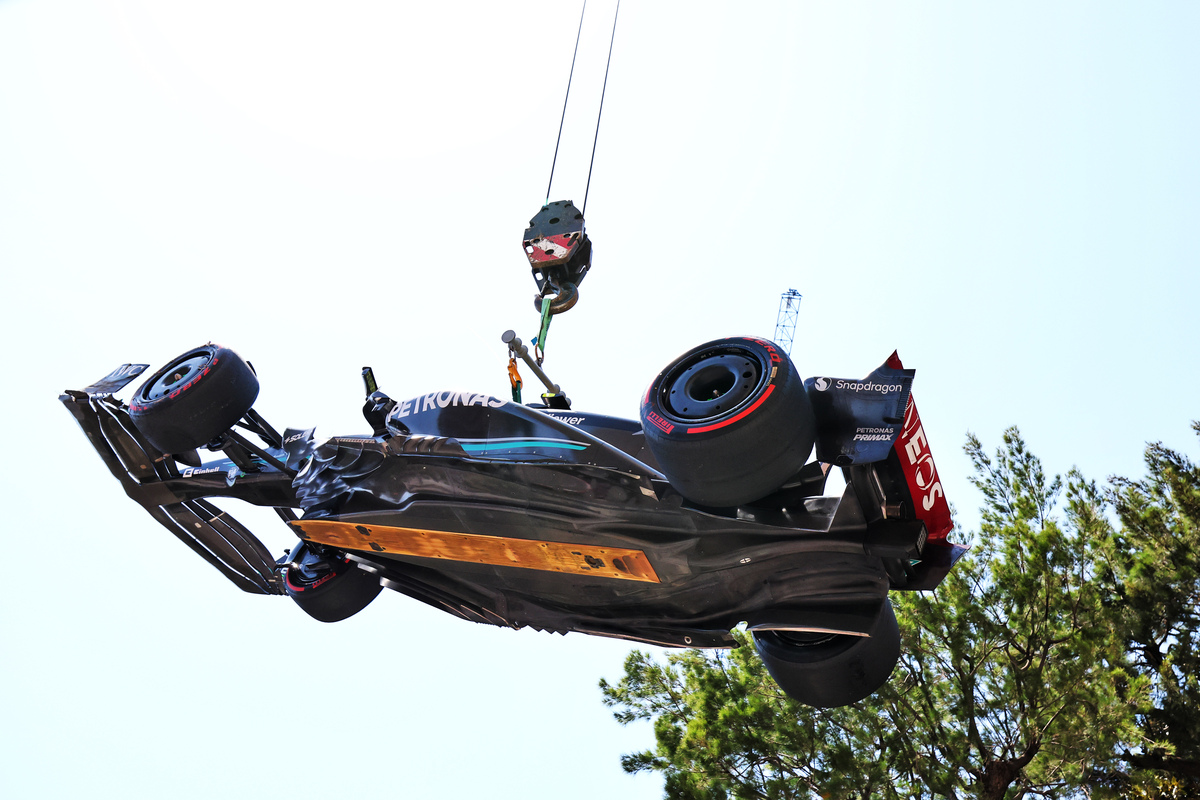
What is the plank?
At the heart of the exclusion is the ‘plank’.
Often referred to as a piece of wood attached to the floor of the car, it’s actually made from permaglass.
It was introduced in 1994 in the wake of Ayrton Senna’s death as part of sweeping changes designed to slow cars down.
The 10mm thick plank was intended to raise the ride height at a time when cars were run especially low to the ground and address the prospect of a car bottoming out and rendering the driver a passenger – one of the theories surrounding Senna’s death.
Since then, its need diminished as, until 2021, cars began running higher than they had, often with the rear raised significantly more than the front.
However, a return to ground effects rules for 2022 saw teams revert to running cars as low to the ground as possible – the closer to the ground they can run, the more downforce they generate.
The limiting factor is three-fold; the floor touching the ground, the airflow stalling (and creating porpoising) and plank wear.
Of those, two are performance limiting, and one is regulatory given that, under the rules, just 1mm of plank wear is allowed.
In Austin, both Hamilton’s and Leclerc’s cars were found to have worn the plank more than that, hence they were disqualified.
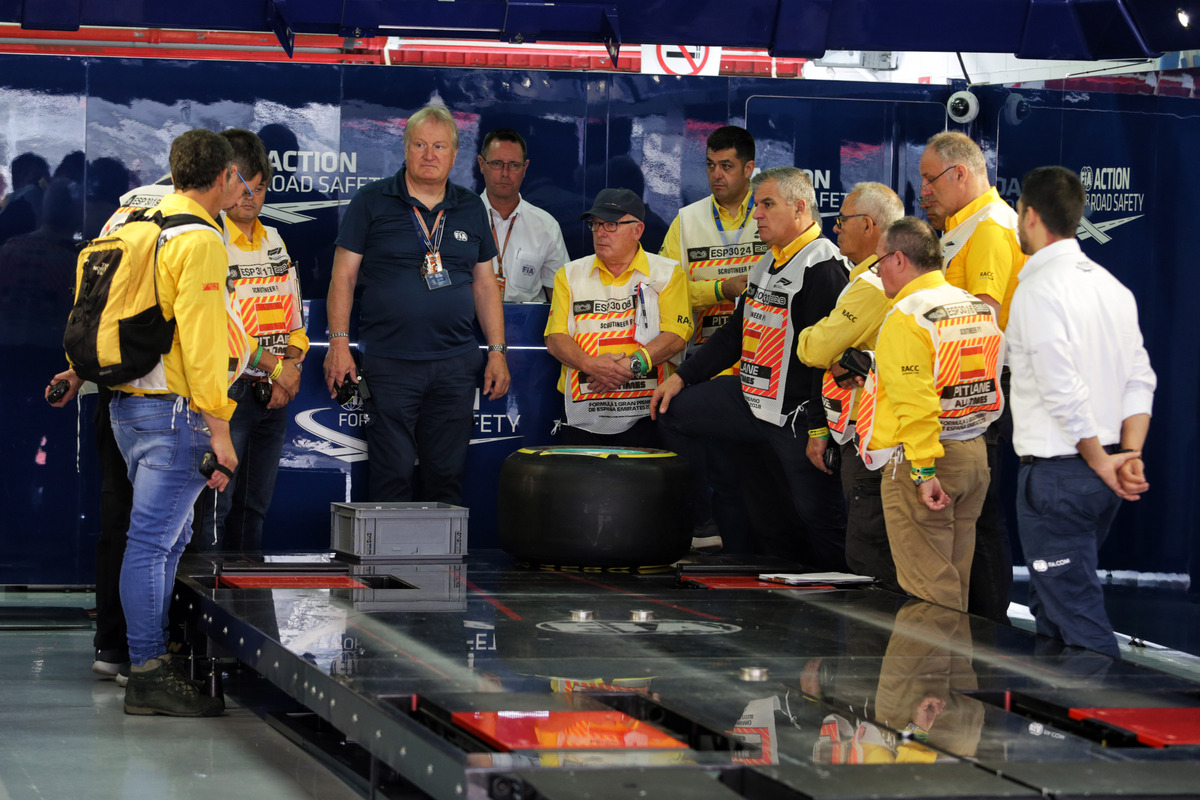
Why were only four cars checked after the US Grand Prix?
One criticism raised of the penalty handed out to Hamilton and Leclerc is that only four cars were checked.
While that is true, it belittles and trivialises the enormous workload undertaken by the FIA’s technical team.
As cars returned to the pits following the United States Grand Prix, all go into a defined parc ferme area.
In there, teams are not allowed to interfere with the car outside of a very limited list of jobs (such as cooling the brakes and engine) as officials perform an array of legality checks.
It’s akin to doping in many respects, where selected athletes are randomly tested to ensure they’re not using performance-enhancing substances.
Some of the tests officials undertake are straightforward while others are more intrusive and therefore take time, for which ‘targeted scrutineering’ takes place.
In that instance, a list will be drawn up ahead of the race that will detail the cars to be checked.
To avoid potential bias, this is done by selecting a finishing position rather than an individual car, team, or driver, and varies from race to race.
In the United States, all 17 finishers had their cars weighed.
All surviving cars also had an array of other checks completed while Carlos Sainz had fuel and oil samples taken from his Ferrari.
That’s in addition to the routine checks the FIA performs before the race.
Sergio Perez, Lando Norris, and Yuki Tsunoda had cars put through a myriad of tests relating to aerodynamic compliance while Max Verstappen, Leclerc, and Zhou Guanyu had their floors tested for deflection.
A fuel sample was taken from the cars of George Russell, Esteban Ocon, and Kevin Magnussen.
Oil was taken from Hamilton’s and Magnussen’s cars while 13 cars had tyre temperatures measured on the grid.
In total, more than 550 individual checks were made by the FIA across the 17 cars that took the chequered flag and almost 700 when the pre-race checks are included.

What is parc ferme?
In motorsport, the term parc ferme is commonplace.
Literally meaning ‘closed park’ in French, in motorsport, parc ferme is used to describe the practice of prohibiting work on a car during a certain period, and often in a prescribed location.
Once that pre-determined point in time is reached – which in F1 is at the end of Qualifying 1 – teams are not allowed to change the car beyond a very small list of defined items.
Primarily they are service-related; changing the oil, replacing fuel, tyres, and so on. One set-up change teams can make is to the front wing angle, but they are not allowed to replace it – what’s on the car must remain there unless given clearance by the FIA’s technical delegate, Jo Bauer.
The idea is that, by effectively locking down the cars, teams cannot run them illegally before fixing them to meet post-session scrutineering.
Parc ferme regulations can be breached, and they often are, for strategic or reliability reasons.
Aston Martin and Haas for instance both chose to work on their cars under parc ferme conditions, which saw both teams line up in the pit lane on Sunday.
In those instances, they made the call after having a difficult Friday in Austin in the hope of improved results in the race itself.
It demonstrates that there mechanisms where, if there is a problem, teams can address it instead of being excluded from a race.
Of course, there is a sporting price that needs to be paid and that is perfectly reasonable as otherwise teams would abuse it.
Instead, any change outside of the very few permitted necessitates a pit lane start.
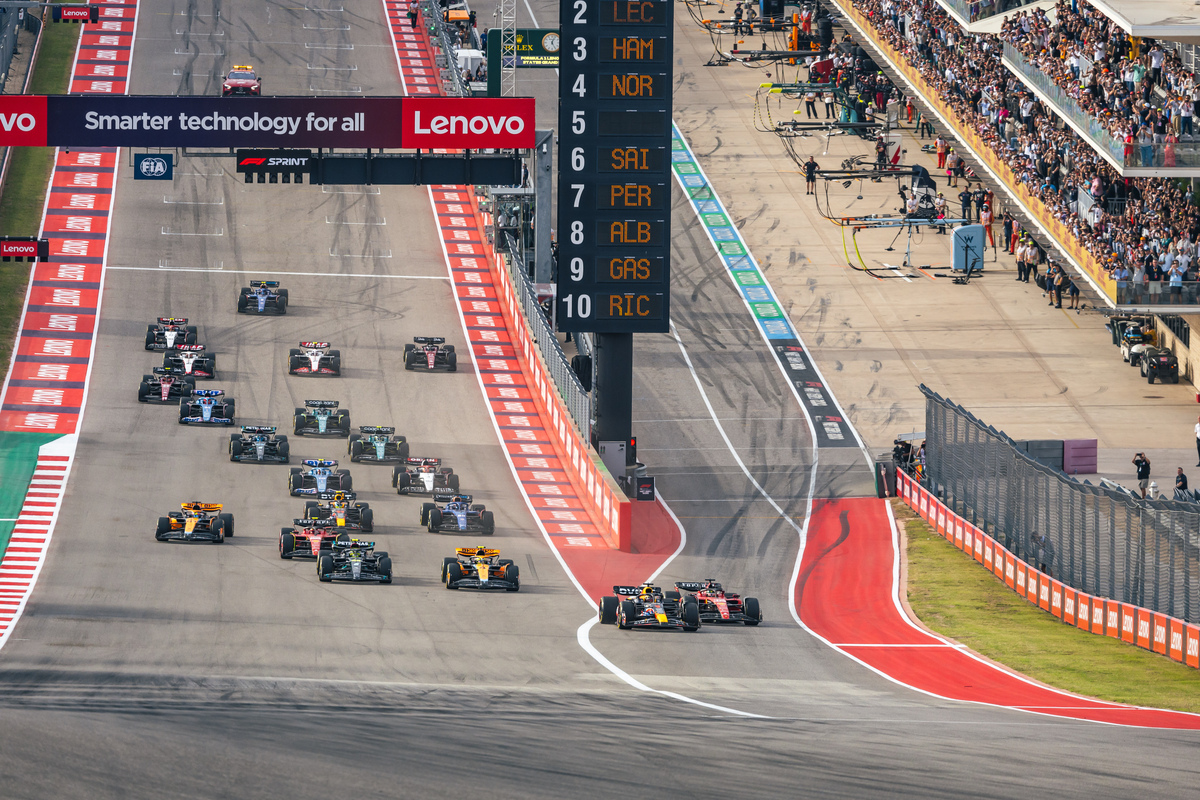
What impact did the Sprint have?
A complicating factor in the United States was that it was a Sprint-format weekend.
On a normal race weekend, teams have three hours of practice before heading into qualifying.
Once Qualifying 1 ends, cars enter parc ferme and, for the most part, cannot be changed.
However, in Austin, the Sprint format was in play.
As a result, teams had just one hour of practice running before progressing into qualifying on Friday.
That afforded them precious little time to dial in the car in terms of set-up and complete all the usual checks they would do.
It meant that instead of simply having to withstand the 20-odd laps drivers complete in qualifying, plus the 56-lap grand prix distance, teams also had a 19-lap Sprint and another 20 laps in the Sprint Shootout to factor in.
It adds another 40-odd laps of competitive running on a circuit that was excessively bumpy – race winner Verstappen suggesting it’s better for rally cars than F1 machinery.
The lack of practice, increased competitive sessions, and the bumpiest track of the year all conspired to make the job more difficult for all teams.

What can we take from Hamilton and Leclerc being excluded?
The process that led to Hamilton and Leclerc being disqualified in Circuit of The Americas has come under scrutiny in the days since.
The most obvious question is why only four cars were checked for plank wear and whether that is an appropriate number given half of those examined failed.
But even more broadly is whether the parc ferme regulations, as they stand today, are fit for purpose.
A key consideration in that is the Sprint weekends, where cars get locked away far earlier with far less running than normal.
That increases the chance of a mistake such as that made by Mercedes and Ferrari and raises the question as to whether that process needs to be amended going forward.
Even more fundamental is the premise of such restrictive par ferme regulations at all.
Introduced as a way to keep a lid on costs and prevent mechanics from being overworked, there are now more natural mechanisms in place; the cost cap, curfews, engine and gearbox limits, and so on.
None of that will change the fact that both Hamilton and Leclerc had cars outside the legal limits and were rightly disqualified. Even allowing for those changes, the cars finished the race in an illegal state.
However, it comes down to whether there is a valid reason to put teams in a position where it is so easy to fall foul of the rules and whether that adds to its spectacle.



















